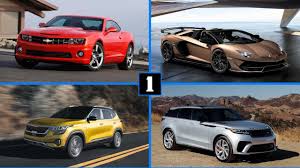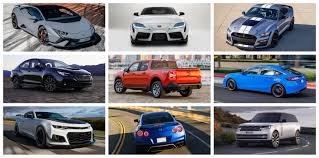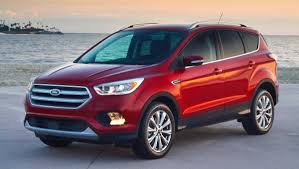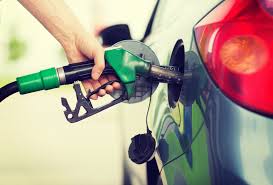Introduction
Ever wondered how much gas your car can hold? Knowing your car’s fuel capacity is crucial for planning road trips, managing your fuel budget, and understanding your vehicle’s limits. Several factors influence the size of a car’s fuel tank, including the type and model of the car, its intended use, and design considerations. Let’s dive into the details to uncover everything you need to know about car fuel capacities.
Average Fuel Tank Capacity
Small Cars
Small cars, often designed for city driving and short commutes, typically have smaller fuel tanks. On average, you can expect a small car to hold between 10 to 13 gallons of gas. This smaller capacity reflects the car’s focus on fuel efficiency and compact design.
Sedans
Sedans are the most common type of car on the road, and their fuel tanks generally hold between 12 to 18 gallons. This range accommodates various models from compact sedans to mid-sized family cars, offering a balance between fuel capacity and vehicle size.
SUVs and Crossovers
SUVs and crossovers, known for their larger frames and versatile uses, often come with fuel tanks that hold between 15 to 25 gallons. This larger capacity supports their use for long-distance travel and heavier loads.
Trucks and Vans
Trucks and vans are built for heavy-duty tasks and long hauls, which is why they have some of the largest fuel tanks. It’s common for these vehicles to hold anywhere from 20 to 40 gallons of gas, ensuring they can cover long distances without frequent refueling.

Fuel Capacity of Popular Car Models
Honda Civic
The Honda Civic, a popular compact car, typically has a fuel tank capacity of about 12.4 gallons. This size supports its reputation for fuel efficiency and reliability.
Toyota Camry
The Toyota Camry, a well-loved mid-sized sedan, usually comes with a fuel tank that holds around 15.8 gallons. This capacity strikes a good balance for daily driving and longer trips.
Ford F-150
The Ford F-150, one of the best-selling trucks, has a substantial fuel tank capacity, ranging from 23 to 36 gallons depending on the model and configuration. This large tank is ideal for towing and long-distance driving.
Tesla Model 3
Though electric vehicles (EVs) like the Tesla Model 3 don’t have traditional fuel tanks, they have equivalent measures in battery capacity. The Model 3’s range can be equated to a fuel tank of about 15 gallons in terms of driving distance.
Impact of Fuel Tank Size on Driving Range
Calculating Driving Range
How far you can drive depends on how much gas your car holds and how good it is on gas. To calculate the driving range, multiply the fuel tank capacity by the car’s miles per gallon (MPG). For instance, a car with a 15-gallon tank and 30 MPG can travel up to 450 miles on a full tank.
Importance of Fuel Efficiency
Fuel efficiency plays a critical role in determining how far you can go on a full tank. Cars with higher MPG ratings will travel further than less efficient vehicles, even if they have similar fuel tank capacities.

How to Find Your Car’s Fuel Tank Capacity
Checking the Owner’s Manual
For the most accurate information on your car’s fuel tank capacity, check your trusty owner’s manual. This document provides detailed specifications about your vehicle, including the fuel tank size.
Manufacturer’s Website
If you don’t have access to the owner’s manual, the manufacturer’s website is another reliable source for this information. Most car manufacturers provide detailed specs and features of their models online.
On the Fuel Tank Cap
Some cars have the fuel tank capacity indicated on the fuel tank cap or inside the fuel door. This convenient placement ensures you always have the information at hand when refueling.
Why Fuel Tank Size Matters
Fuel Economy and Cost-Effectiveness
A larger fuel tank can sometimes offer better fuel economy since it reduces the number of refueling stops, which can save both time and money. For those who live in areas where fuel prices are lower, filling up a larger tank when prices are down can be more cost-effective.
Environmental Considerations
While a larger fuel tank may mean fewer stops, it’s also important to consider the environmental impact. Vehicles with larger tanks are often less fuel-efficient overall, contributing more to greenhouse gas emissions. Choosing a vehicle with a balance between fuel tank size and fuel efficiency can help reduce your carbon footprint.
Fuel Tank Sizes in Electric Vehicles
Advances in Battery Technology
The future of EVs is promising, with continuous advances in battery technology. These improvements are leading to longer ranges and faster charging times, making EVs more practical for everyday use. Solid-state batteries, for example, could dramatically increase the range of EVs while reducing the need for frequent charging.
Hybrid Vehicles
Hybrid vehicles combine gasoline engines with electric motors to enhance fuel efficiency and extend driving range. They typically have smaller fuel tanks than conventional cars, but their electric components compensate by providing additional driving power.
Must Read: car idles rough but drives smooth
Tips for Maximizing Fuel Efficiency
Proper Tire Inflation
Squeeze more miles out of every gallon! Underinflated tires drag on the road, forcing your engine to work harder. Regularly check your tire pressure and inflate them to the specific levels listed in your car’s manual.
Use of Cruise Control
Using cruise control on highways can help maintain a constant speed, which is more fuel-efficient than varying your speed. It also reduces the need for acceleration and deceleration, saving fuel in the process.
Limiting Air Conditioning Use
Air conditioning can significantly impact fuel consumption, especially in stop-and-go traffic. When possible, use the car’s ventilation system instead of the air conditioner, or roll down the windows when driving at lower speeds.
Future Trends in Fuel Tank Sizes
Lightweight Materials
The use of lightweight materials in car manufacturing, such as carbon fiber and aluminum, is becoming more common. These materials help reduce the overall weight of the vehicle, which can improve fuel efficiency and allow for smaller fuel tanks without sacrificing driving range.
Alternative Fuels
The development of alternative fuels, such as hydrogen and biofuels, is also influencing the future of fuel tank sizes. Vehicles that run on alternative fuels may have different storage requirements, which could lead to new standards in fuel tank design and capacity.

Must Read: how much does car window tinting cost
Conclusion
In conclusion, the size of a car’s fuel tank is a critical aspect of its design that affects its practicality, fuel efficiency, and environmental impact. Whether you drive a small city car, a spacious SUV, or an electric vehicle, understanding your fuel capacity helps you plan better and make more informed decisions. Fuel tank capacity is a great factor for selecting the perfect car to rent in Detroit according to you destination distance. As technology advances and our understanding of fuel efficiency improves, we can expect to see continued innovation in this area, leading to smarter, more efficient vehicles for the future.
FAQs
What is the average gas tank size for a sedan?
The average gas tank size for a sedan ranges from 12 to 18 gallons, accommodating a variety of models and ensuring a balance between fuel capacity and vehicle size.
How can I increase my car’s fuel efficiency?
You can increase your car’s fuel efficiency by maintaining regular service, adopting efficient driving habits, and reducing excess weight and drag on your vehicle.
Do electric cars have fuel tanks?
Electric cars do not have traditional fuel tanks. Instead, they use battery packs to store energy, which determines their driving range.
Why do trucks have larger fuel tanks?
Trucks have larger fuel tanks to support their heavy-duty tasks, long-distance travel, and towing needs, which require more fuel than smaller vehicles.
How does driving style affect fuel consumption?
Driving style greatly affects fuel consumption. Smooth acceleration, maintaining a steady speed, and avoiding excessive idling can significantly improve fuel efficiency.










